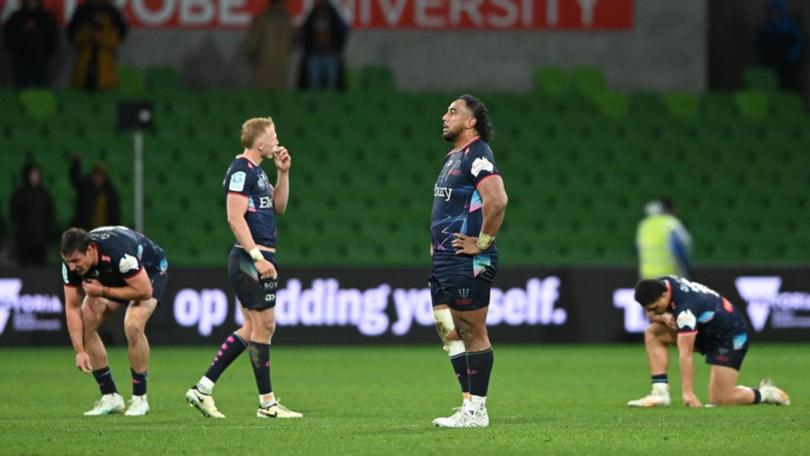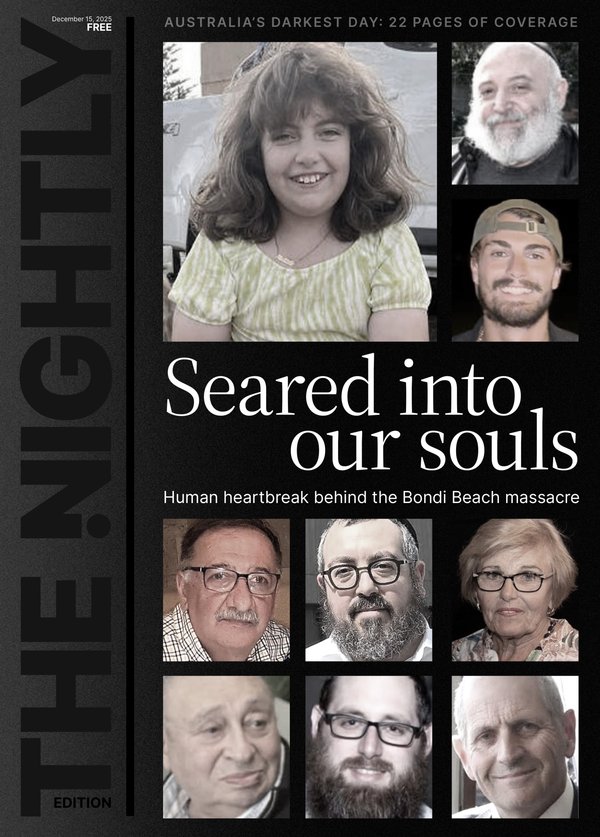Melbourne Rebels' failings on field and off lead to Super Rugby axing

The Melbourne Rebels’ demise may be a reflection of the state of the ailing game in Australia, but in reality the writing was on the wall long before they were given the Super Rugby Pacific axe.
The Rebels entered the competition in 2011 but faced challenges like no other club.
They were competing for supporter dollars in an AFL-mad town, with nine clubs just in the Melbourne metropolitan area.
Sign up to The Nightly's newsletters.
Get the first look at the digital newspaper, curated daily stories and breaking headlines delivered to your inbox.
By continuing you agree to our Terms and Privacy Policy.But really they were in a contest with NRL over-achievers the Melbourne Storm, with the teams even playing out of the same venue, AAMI Park.
Many sports fans in Victoria still don’t know the difference between rugby union and rugby league, while the international make-up of Super Rugby lacked tribal appeal.
The Storm boasted some of the game’s greats in Cameron Smith, Billy Slater and Greg Inglis, and current stars such as Cameron Munster and Ryan Papenhuyzen.
The Rebels have their share of Test players, but the Wallabies are no longer one of the country’s most recognisable teams or attract the same fanfare.
Australia had their worst-ever World Cup result last year, failing to make it out of their pool.
The Storm joined the NRL in 1998 and won their first premiership in 1999, and have played in 10 grand finals in 25 years.
The Rebels, until this season, had never finished better than ninth.
Currently seventh heading into the last regular round, they will play in their first finals campaign next month.
The lack of on-field success contributed to Melbourne’s financial woes, with the club $23 million in debt when cut by Rugby Australia (RA), with crowd figures dwindling year on year.
Initially backed by News Limited and always attracting larger crowds than the Rebels, the Storm only broke even in 2018.
RA itself is in financial strife and relying on a loan facility until a windfall when it hosts the touring Lions next year and men’s World Cup in 2027.
RA chairman Daniel Herbert was scathing in his criticism of the Rebels’ directors after the administrator said he believed the club had been trading insolvent for five years.
But he wasn’t sure if better financial management would lead to rugby union success in Victoria.
“That’s a good question ... I know that the Melbourne Storm struggled for a long time as well, even with a lot more success,” Herbert said.
“I guess the Rebels, up until recently, hadn’t had that on-field success. I think they were running at about 32 per cent win ratio, which in a very challenging market with such a strong competitor as the AFL, it does make it very difficult.
“But I do think there are ways because you don’t have to spend as much money ... there are plenty of instances of clubs who perform well without spending the most amount of money.
“There are always decisions that they could make, but I think there are certain challenges in each market that you go to, and that’s one here in Melbourne).”
Rebels coach Kevin Foote said RA should have done more to give rugby a foothold in Victoria, comparing the funding to AFL, who last year provided $65 million to expansion clubs GWS and Gold Coast.
But RA chief executive Phil Waugh said the governing body simply didn’t have the cash to splash.
“We have limited resources, limited finances, and we need to invest in the game that’s going to drive the greatest connection to community as well as uplifting participation,” Waugh said.
“We have to live within our means.”
